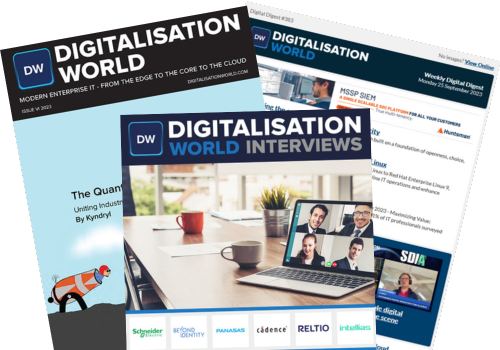Enterprises are accelerating their shift to cloud-based Enterprise Resource Planning (ERP). Anyone working in the SAP market should recognise that migration to the cloud is impossible to ignore. SAP plans to retire many of its long-used tools for operations management by the end of 2027, with focus now turned towards SAP S/4 HANA® Cloud. This is a stark reminder to the wider industry that the cloud continues to call. As legacy tools become obsolete, organisations will, at some point, have to answer.
Cloud-based ERP offers a scalable and flexible architecture that can adapt to evolving business needs, integrate with other digital tools and deliver real-time insights that improve decision-making. It helps businesses boost collaboration, find efficiencies and drive sustainable growth - all with reduced costs. However, this move is not without added complexity. As legacy IT tools and systems reach retirement, organisations face the challenge of keeping both old and new systems running smoothly during a transition period that could span years.
Bridging the transition
For larger enterprises, ERP migrations are not quick wins. They can take years or even decades. Cost, time and complexity remain key barriers for cloud ERP projects. The challenge is significant. In fact, according to Gartner, more than 70% of recently implemented ERP initiatives will fail to fully meet their original business use case goals.
Throughout this journey, organisations must find a way to balance operational stability with adoption of new technologies. Success hinges on maintaining continuity while gradually phasing out legacy tools. To manage this effectively, enterprises require unified operational control across their entire operation; from legacy to transitional and future systems.
AIOps can provide enterprises with that single point of control that allows them to manage complex ERP landscapes, supporting every stage of the migration. It offers real-time visibility, unified monitoring across environments and proactive response capabilities - whether systems are on-premise or cloud-based. This approach helps to reduce risk, minimise downtime and streamline workflows. Ultimately, it frees IT teams up to focus more closely on innovation during the transition period. It allows them to properly plan, setting performance benchmarks, automating testing and training environments, having technical eyes and ears on the migration itself, ensuring the system is operating effectively. Most importantly, it gives organisations the confidence to transform.
Considerations for transformation: there’s more to it than tech
ERP transformation is not just a technical change. Cultural change and workforce preparation are just as important. Successful projects require upskilling in automation, cloud management, security, and analytics. Organisations that fail to invest in training or change management run the risk of project delays beyond the already lengthy transition period. They might also find themselves under-delivering on the expected business outcomes. Both situations increase financial cost and slow the entire project. While AIOps can support teams by reducing complexity and minimising manual workloads, people and processes remain central to both short and long-term success.
Workforce readiness isn’t the only potential financial consequence. The transformation itself also adds pressure. ERP platforms are consumption-based. They offer flexibility but also unpredictability. Paying based on usage can drain budgets when services are underutilised. Managing spend is crucial. The most effective cloud-based ERP deployments integrate additional tools, and deploying a financial management system can help organisations create more efficient and cost-effective cloud management.
With hybrid and multi-cloud ERP landscapes, security risk factors can quickly multiply across a web of interconnected integrations. Organisations must remain vigilant, monitoring for vulnerabilities and compliance gaps, particularly as systems evolve during long transition projects. Once again, additional tools that manage security systems can help manage the challenge. They ensure compliance with security policy and configuration while providing support for audit and monitoring for security risks. AIOps can also improve security posture by combining observability, automation, and intelligent alerts. It can help to ensure compliance and reduce the risk of both external and internal threat vectors.
Creating a foundation to build on
SAP’s decision to retire some of its key tools for ERP managers was a wake-up call for many, but it also created a moment of reflection. Enterprises now have the chance to assess weaknesses in their operations and address them with modern approaches.
Transformation projects can be daunting, carrying with them hefty financial and security considerations. Many organisations will be facing an uphill battle in their switch to cloud-based ERP. AIOps can help reduce migration frustrations and delays, and can create more resilient operations. It unifies operations across diverse environments, delivering predictive insights and automating routine tasks. As organisations embrace the next era of ERP, AIOps might just be the key differentiator in streamlining the transition.




